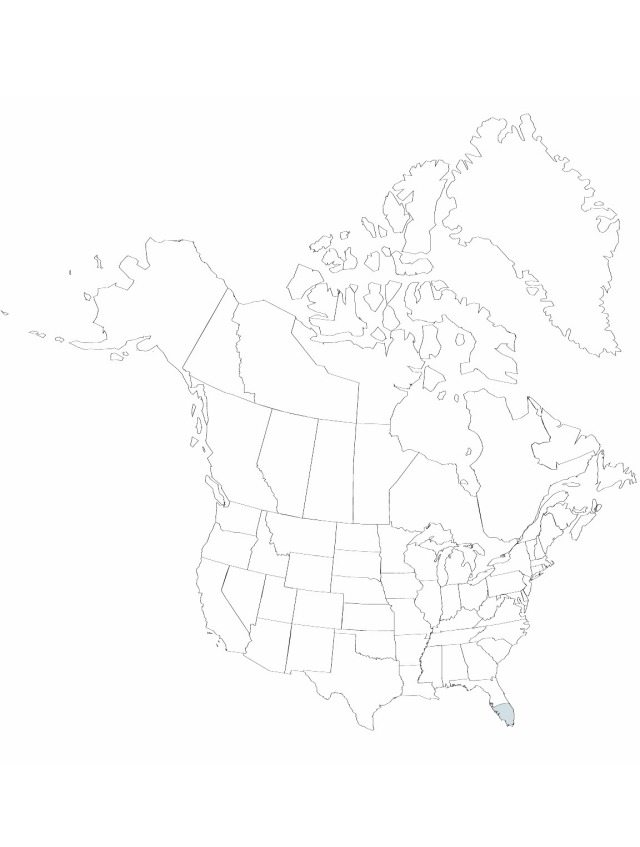Tillandsia flexuosa
Prodr. 56. 1788.
Plants single or in small clusters, flowering to 1 m. Stems short. Leaves 10–20, many-ranked, spreading to recurved, spirally twisted, gray or reddish, banded silver, to 40 × 1–2.5 cm, appressed-grayish-scaly; sheath dark chestnut-brown, broadly elliptic to ovate, not inflated, not forming pseudobulb, 2–3 cm wide; blade narrowly triangular, leathery, channeled to involute, apex attenuate. Inflorescences: scape conspicuous, erect, 15–40 cm, 3–5 mm diam.; bracts laxly imbricate, erect to spreading, distal widely spaced, like leaves but gradually smaller; sheath of bracts narrowing abruptly into blade; spikes very laxly 2–6-flowered, erect to spreading, simple or 2-pinnate, linear in outline, 12–40 × 3–4.5 cm, apex acute; lateral branches 2–8. Floral bracts widely spaced, spreading with flowers, gray or reddish, exposing most of rachis at anthesis, elliptic, not keeled, 2.3–3.1 cm, thin-leathery, base not visible at anthesis, apex acute, surfaces glabrous to slightly scaly. Flowers 5–40, conspicuous; sepals free, elliptic, not keeled, 2–3 cm, leathery to thin-leathery, veined, apex obtuse, surfaces glabrous; corolla tubular, petals erect, apex spreading, pink to dark rose, ligulate, to 4 cm; stamens exserted; stigma exserted, conduplicate-spiral. Fruits to 7.5 cm.
Phenology: Flowering summer.
Habitat: Epiphytic in exposed habitats often near the coast
Elevation: 0–30 m
Distribution

Fla., West Indies, Central America, South America
Discussion
Selected References
None.